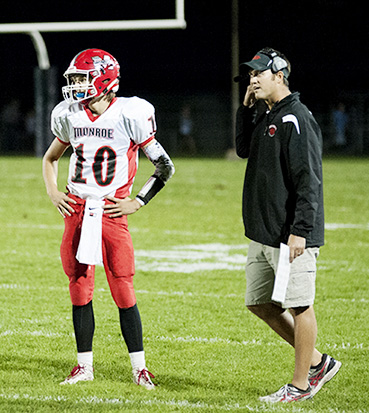Involving your athletes in team discipline
Struggling with some discipline issues on your team?
 Seems like every team has at least a couple of athletes who love to push the envelope when it comes to team rules. Some athletes are notoriously late, others have too “active” of a social life, and others just have not gotten down the whole concept of responsibility and accountability.
Seems like every team has at least a couple of athletes who love to push the envelope when it comes to team rules. Some athletes are notoriously late, others have too “active” of a social life, and others just have not gotten down the whole concept of responsibility and accountability.
Getting your athletes to follow the rules starts with giving them some input in creating them. Investing the time to involve your athletes in determining the team’s mission, standards and rules goes a long way toward improving the discipline on your team. Involving your athletes establishes four levels of discipline: Personal responsibility, team accountability, team confronts and coach confronts.
Level one: personal responsibility
Athletes most often accept responsibility for and internalize the team rules and standards when they’re involved in creating them. They follow the rules because they are their rules — they created them, believe in them and feel that they help the team achieve its goals. As author Stephen Covey writes in The Seven Habits of Highly Effective People, “No involvement equals no commitment.” Allow your athletes some say in setting the rules and they are more likely to follow them.
Additionally, many times the rules your athletes develop are stricter than the rules you would have created on your own as coach. You don’t need to create a laundry list of rules to cover every possible scenario. You just need to establish some important ones and make sure they’re consistently enforced. In short, “level one” athletes follow the rules because they believe in their value and importance.
Level two: team accountability
Secondly, involving your athletes in determining the team mission helps them feel a sense of accountability to their teammates. Not only is the individual accountable to herself, but she also understands that her actions affect her teammates. She owes it to the team to do the right thing. If she breaks a rule, she is not only hurting herself, she is letting the team down as well.
“Level two” discipline means your athletes follow the rules out of respect for their teammates. To help instill this level in your team, consider punishing the whole team rather than just the individual when someone breaks a team rule. For example, if someone is late for a workout, the entire team must run sprints instead of just the individual who was late. Having everyone run quickly sends the message that what one person does impacts the whole team.
Level three: team confronts
Because the team is invested in a common goal, your team leaders should take responsibility for disciplining their teammates. Rather than you having to be the bad guy all the time, have your team leaders keep their teammates in line. Your leaders should care enough about the team’s mission that they are willing to constructively confront their teammates.

When a person strays, your leaders now begin to encourage that person to get back in line because the entire team’s success is at stake. As Tennessee women’s basketball coach Pat Summitt writes in Reach for the Summit, “The entire aim of our policies at Tennessee is to get our athletes to discipline each other . . . We have evolved a system in which I don’t have to do a whole lot of punishing, penalizing or pushing them. Our upperclassmen become the disciplinarians of our team instead of me.”
“Level three” discipline occurs because the leaders on the team demand that their teammates do the right thing. This level of discipline is a challenging one to put in place, because so many of today’s athletes are reluctant to call out their misbehaving teammates. Be sure to invest the time to educate and empower your captains and team leaders on how to confront their teammates.
Use your athletes to help decide what types of penalties should be administered when teammates break team rules. Have these penalties firmly established ahead of time. Typically, restricting playing time has the biggest effect on athletes and serves as a good deterrent. Also, look to impose minor penalties, such as carrying the team’s equipment or washing uniforms for a minor offense.
Level four: coach confronts
Finally, you as the coach are the last line of defense to make sure your athletes follow the rules. You must confront athletes when they do not live up to the standards endorsed by the entire team. You hope your team leaders can take care of most of the team problems at “level three,” but if they can’t, you must then step in at “level four.”
Unfortunately, there’s a small percentage of coaches who have trouble enforcing the team rules. They either want to be their athletes’ friends, or they have double standards for their superstar athletes. When coaches aren’t willing to become the “level four” disciplinarians, I can guarantee you that “level three” discipline is short-lived or non-existent. Captains will not confront their teammates if they know coaches are not willing to back them.
Take a moment to assess the strength of each of the four levels of discipline in your program. If they are not where they need to be, investing the time now to shore them up saves you a lot of grief and headaches down the road.
For more tips and articles from Jeff Janssen, visit www.JanssenSportsLeadership.com.
One thought on “Involving your athletes in team discipline”
Leave a Reply
You must be logged in to post a comment.






I don’t understand how you feel a teammate “punishing “ another teammate is beneficial for team commradere and how this doesn’t turn into bullying if the teammate who is the leader decides they are going to pick on someone they don’t particularly like. Not everyone on a team likes each other. They do have to be good teammates, but I have seen bullying by older teammates firsthand and this way of punishing seems very detrimental.